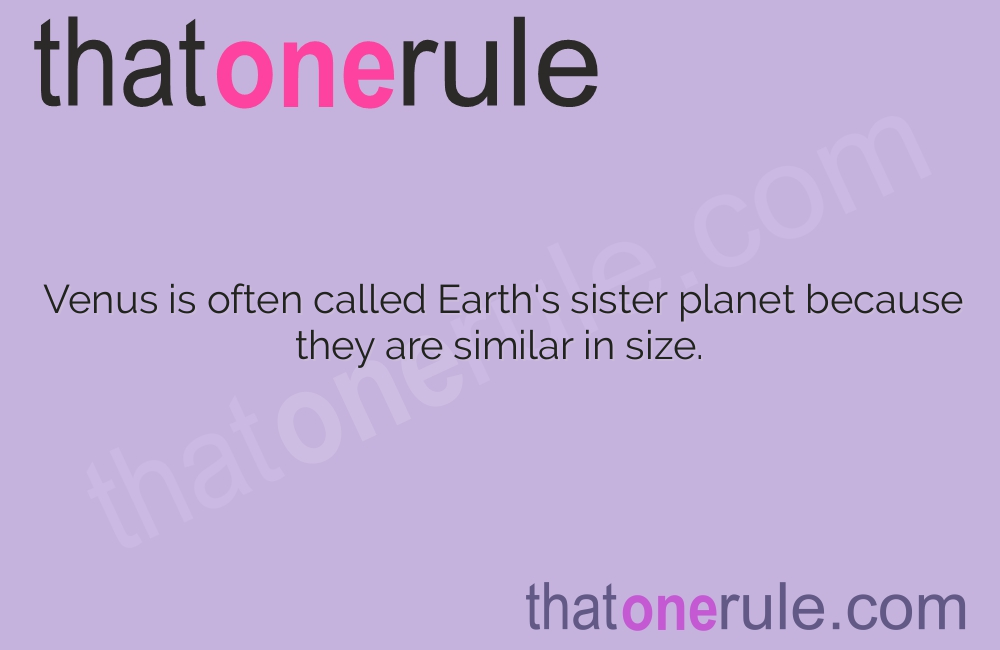Discovering Intriguing Facts about Venus

Venus is often called Earth’s sister planet because they are similar in size.
Venus is the second planet from the Sun.
Venus has the hottest atmosphere of any planet in our solar system.
The surface temperature on Venus can reach up to 900 degrees Fahrenheit (475 degrees Celsius).
Because of its thick atmosphere, Venus experiences a runaway greenhouse effect.
Venus rotates on its axis very slowly, taking 243 Earth days to complete one rotation.
Despite its slow rotation, Venus has the shortest day of any planet, lasting only 116 Earth days.
Venus is the only planet in our solar system that rotates backwards, known as retrograde rotation.
The thick clouds on Venus are made up of sulfuric acid, which creates a yellowish hue to its atmosphere.
Venus has no moons or rings.
Venus’s atmosphere is composed mainly of carbon dioxide, with traces of nitrogen and sulfur dioxide.
The surface of Venus is covered in volcanic plains, mountains, and impact craters.
Venus has the longest canyon system in the solar system, called Venusian rifts.
The largest volcano on Venus, called Maat Mons, is about 6 miles (10 kilometers) high.
Venus has an extremely dense atmosphere, with a pressure about 92 times greater than Earth’s.
Venusian winds can blow up to 250 miles per hour (400 kilometers per hour).
Venus takes about 225 Earth days to complete one orbit around the Sun.
Discovering Intriguing Facts about Venus part 2
Venus is named after the Roman goddess of love and beauty.
Venus is often associated with femininity and is called the evening star or the morning star.
The Soviet Union’s Venera 7 probe was the first spacecraft to successfully land on Venus in 1970.
Venus is the second-brightest natural object in the night sky after the Moon.
The surface of Venus is much smoother than that of other planets, with no mountains or valleys.
Venus has a weak magnetic field compared to Earth.
Venus is the hottest planet in our solar system, even hotter than Mercury, which is closer to the Sun.
Venus has a thick layer of clouds that reflect sunlight, making it the brightest planet in our sky.
Venus has been visited by numerous spacecraft, including NASA’s Magellan mission and ESA’s Venus Express.
Due to its extreme temperatures, high pressure, and acidic atmosphere, no spacecraft has survived on the surface of Venus for long.
Venus appears larger than any other planet to us when viewed from Earth.
Venus’s atmosphere is so thick that it causes a phenomenon known as a hot spot where the temperature increases with altitude.
Venus has been observed since ancient times and often mistaken for a star due to its brightness.
Venus has a very desolate landscape, with no signs of water or organic life.
The atmosphere of Venus is so dense that it has a smoggy appearance.
Venus is one of the four terrestrial planets in our solar system, along with Mercury, Earth, and Mars.
Venus is sometimes called the Morning Star when it appears in the eastern sky before sunrise.
Venus has phases similar to the Moon, as it orbits the Sun closer to Earth than any other planet.
Venus has been a popular subject of literature, art, and mythology throughout history.
Venus has a relatively low amount of water vapor in its atmosphere compared to Earth.
The surface of Venus is relatively young, with evidence of volcanic activity in recent geologic history.
Venus has a high albedo, meaning it reflects a significant amount of sunlight.
Venus has a superior conjunction with the Sun every 584 days, where it appears to pass behind the Sun from Earth’s perspective.
Venus has been considered a potential target for human colonization due to its similar size and composition to Earth.
The average surface temperature on Venus is hotter than the melting point of lead.
Venus has been called the Diamond Planet because its atmosphere contains traces of carbon, which can form diamonds.
Venus’s atmosphere is known for its strong winds and constant cloud cover.
Venus has been featured in various movies and books as a mysterious and beautiful planet.